1
2
3
4
5
6
7
8
9
10
11
12
13
14
15
16
17
18
19
20
21
22
23
24
25
26
27
28
29
30
31
32
33
34
35
36
37
38
39
40
41
42
43
44
45
46
47
48
49
50
51
52
53
54
55
56
57
58
59
60
61
62
63
64
65
66
67
68
69
70
71
72
73
74
75
76
77
78
79
80
81
82
83
84
85
86
87
88
89
90
91
92
93
94
95
96
97
98
99
100
101
102
103
104
105
106
107
108
109
110
111
112
113
114
115
116
117
118
119
120
121
122
123
124
125
126
127
128
129
130
131
132
133
134
135
136
137
138
139
140
141
142
143
144
145
146
147
148
149
150
151
152
153
154
155
156
157
158
159
160
161
162
163
164
165
166
|
+++
date = 2024-01-27
title = "Data Visualization: Mapping Omaha Crime Data with Tableau"
description = ""
draft = false
+++
In this project, I am going to show you how to use Tableau Public for
free to create simple dashboards.
I will be creating simple visuals from an Omaha crime data set and
combining them to create the dashboard below. You can view this
dashboard interactively online here: [Omaha Crime Data (2015 -
2023)](https://public.tableau.com/app/profile/c.c7042/viz/OmahaCrimeData2015-2023/OmahaCrimeData2015-2023#1).

# Gather the Data
You can download incident data from the Omaha Police Department on their
[Incident Data
Download](https://police.cityofomaha.org/crime-information/incident-data-download)
page. They currently have files for the years 2015 through 2023.
Each file will be downloaded as a CSV file, approximately 3 MB - 8 MB.
# Clean and Transform the Data
I have used Python to combine the files into a single CSV file, as well
as adding a custom `datetime` column. You could do this step
in any software you prefer, but I prefer Python as its free, easy to
use, and has a plethora of support resources online.
Start by opening a terminal, navigating to your Downloads directory, and
creating a python script.
```sh
cd ~/Downloads
nano data_processing.py
```
Within the Python script, paste the following:
``` python
# Import modules
import pandas as pd
import glob
import os
# Import the data
path = r"~/Downloads/*.csv"
files = glob.glob(path)
list = []
for file in files:
df_tmp = pd.read_csv(file)
li.append(df_tmp)
df = pd.concat(list, axis=0, ignore_index=True)
# Create a combined datetime column
df["datetime"] = pd.to_datetime(
df["date"] + " " + df["time"],
format="%m/%d/%Y %H:%M:%S"
)
df.head()
# Export the combined data
df.to_csv(r"~/Downloads/combined_incidents.csv")
```
Once pasted, save and close the file. You can execute the file like so:
```sh
python3 data_processing.py
```
After this, you should have a combined data file that contains all
incidents between 2015 and 2023. Mine was approximately 55 MB.
# Tableau Public
[Tableau Public](https://public.tableau.com/) is a free-to-use web
application that allows you to create visualizations by uploading data
sources. Note that there\'s no way to keep the data and visualizations
private, so don\'t upload anything private.
After creating an account, you can click the `Create` \>
`Web Authoring` link to create your first visualization.
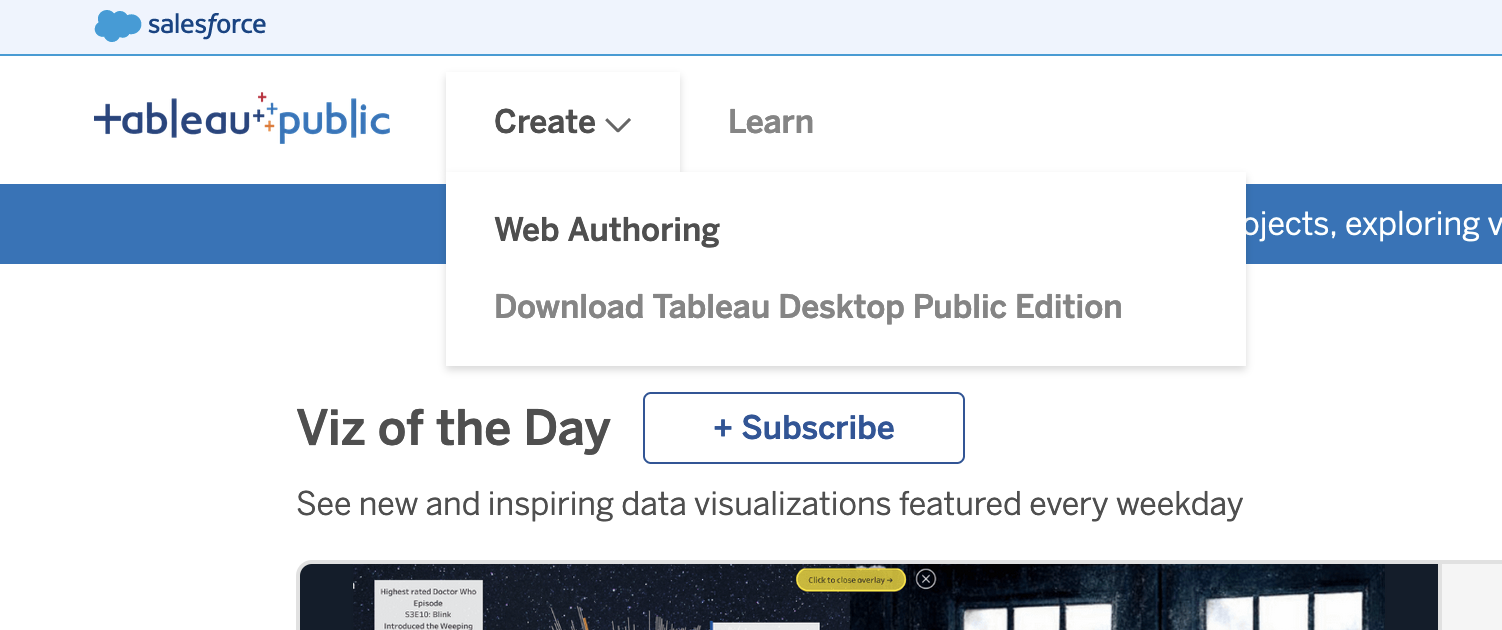
## Upload the Data
Once you\'ve opened your first project, Tableau will ask you to connect
to your data. For this project, click the
`Upload from computer` button and select the CSV file
previously combined in the step above.
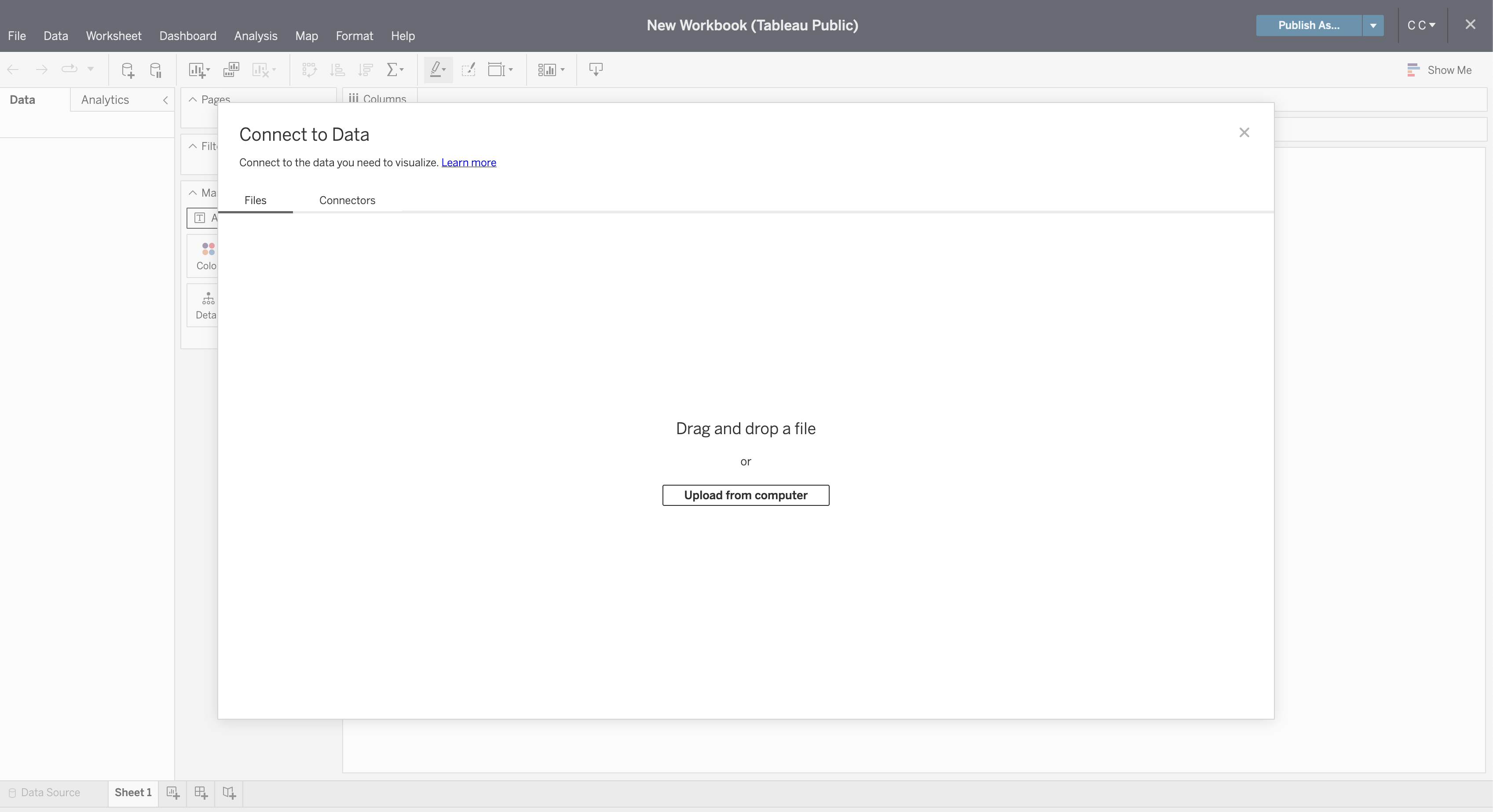
Once connected, you can refresh the preview of the data with the
`Refresh Data Source` button in the toolbar.
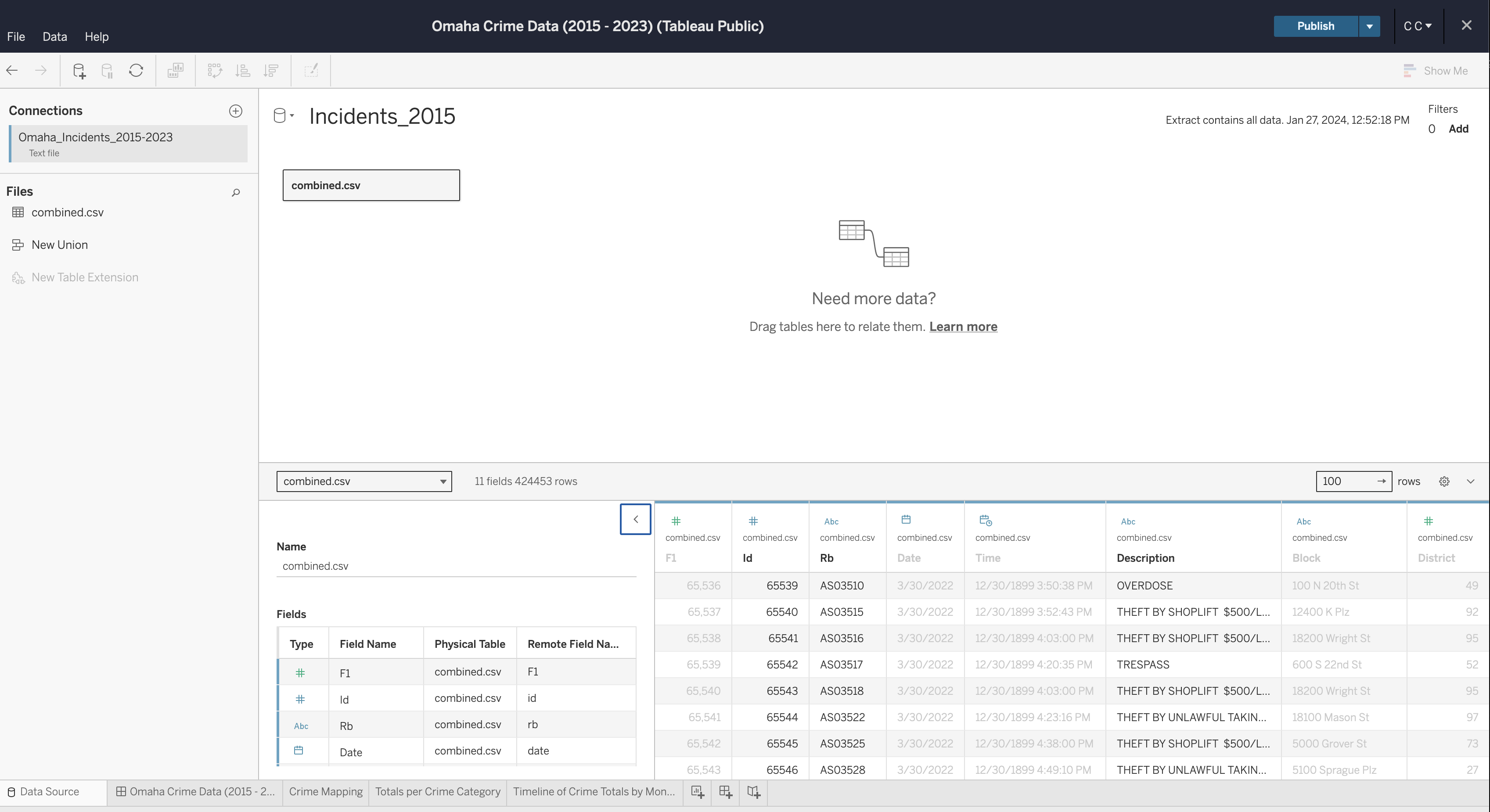
If you need to edit any of the data types, column names, etc., you can
do so now. Once complete, generate an extract so that you can start
creating visualizations.
## Create Visualizations
To start, create a worksheet in the toolbar at the bottom of the screen.
Within this screen, select a column from the `Data` side bar
on the left and drag it into the `Columns` or
`Rows` area of the canvas.
See below for the map visualization. You can recreate this by adding the
following fields:
- `Columns`: Lon
- `Rows`: Lat
- `Marks`:
- Description
- Datetime
- `Filters`: Datetime
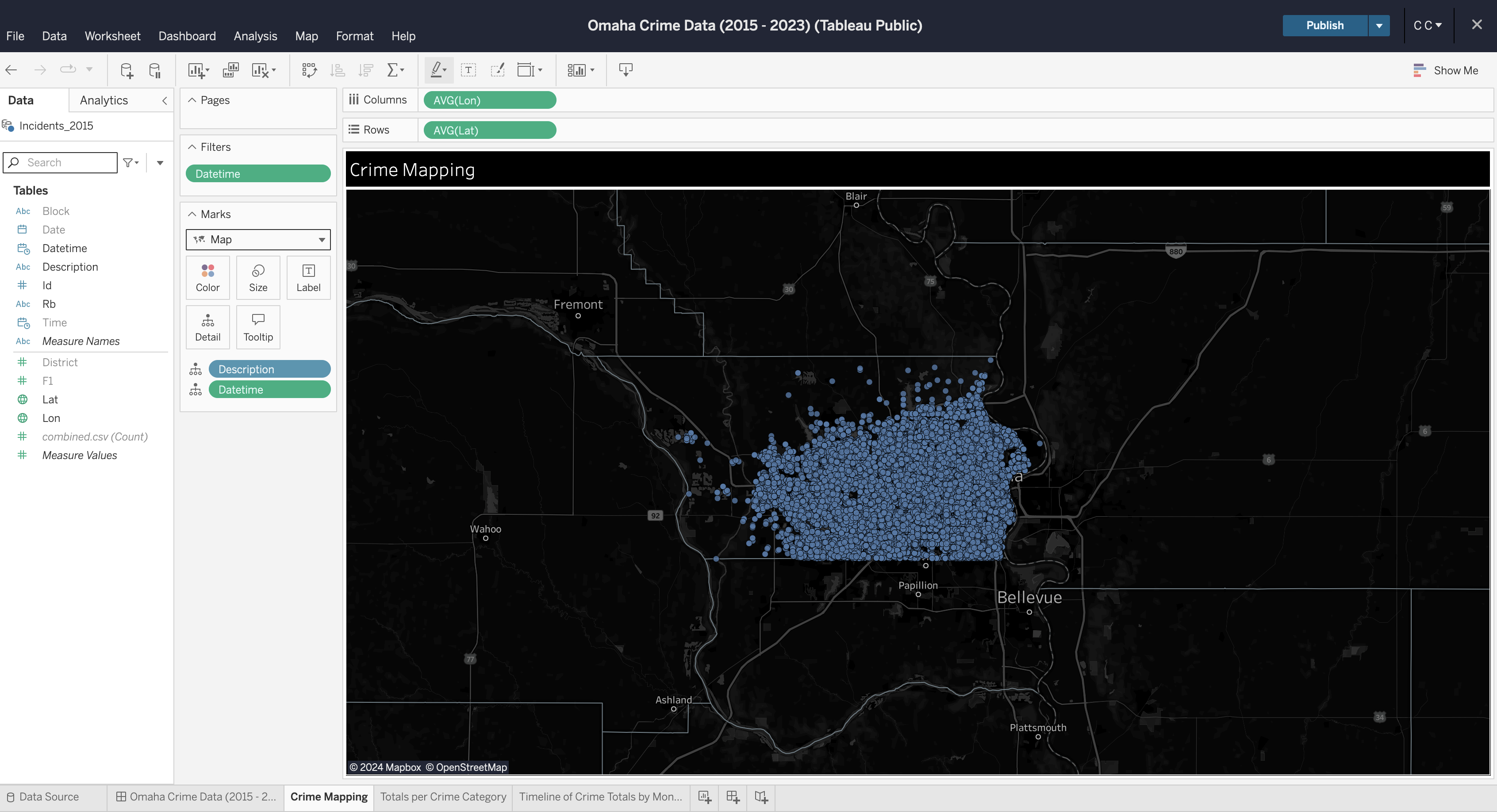
You can repeat this process for each visualization you want to create.
Explore your options by dragging data fields to different areas and by
opening the field options to explore what operations can be performed on
different data types (e.g., average, count, etc.).
## Create Dashboard
To create a dashboard, click the button on the toolbar at the bottom of
the screen. Within the dashboard, drag each sheet from the left side bar
onto the dashboard canvas.
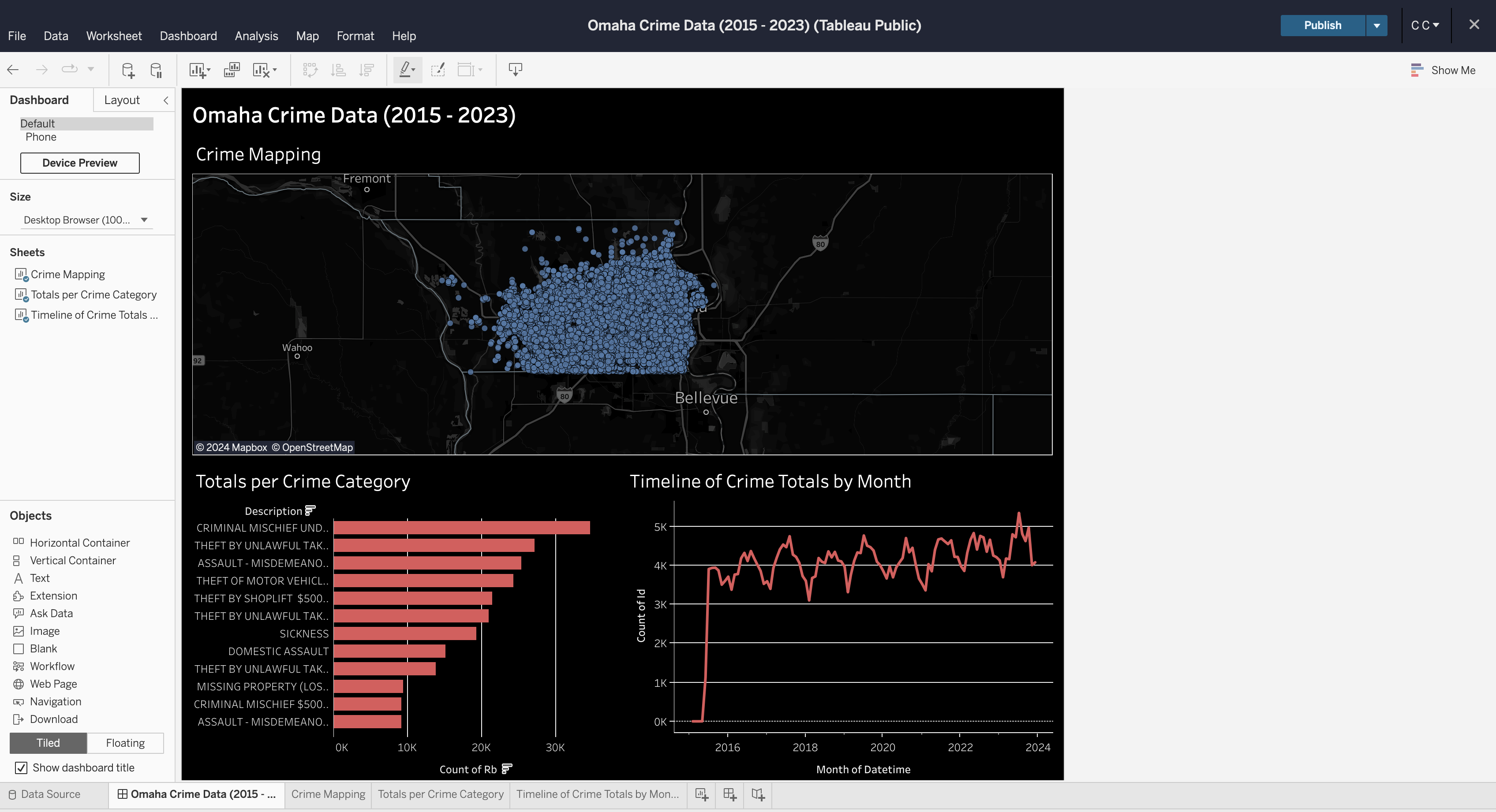
## Formatting
You can explore a ton of different formatting options throughout the
worksheets and dashboard. Specifically for maps, you can alter the map
layers, background, and visible features through the `Map`
menu in the top file menu of the editing screen.
In the finished dashboard below, I opted for a dark mode with a map that
showed county lines and city names.
There\'s a ton of other options available to be used in a dashboard like
this, but this project shows a quick preview of what you can do in
Tableau Public.

|
